|

August 15 is deadline for nominations for
ASEAN Biodiversity Champions
ASEAN strengthens conservation of natural
heritage
PES approach to support green growth in Asia
2,517 species in the ASEAN region in danger of
vanishing
On 22 September, ring a bell for biodiversity
Grim scenario on ocean biodiversity
ASEAN-WEN Species ID Guides, a model for EU
and Oceania authorities
First-ever Water Hour held 8 pm, 11
June
Visioning workshop held for South China Sea
Seascape
CBD-sponsored global symposium
focuses on capacity building in taxonomy
Philippine joins Singapore, Malaysia with
Clearing House Mechanism website
Hope for endangered crocs in Cambodia
Philippines to host first Asian Bird Fair
FREELAND trains Vietnamese rangers for better
forest and wildlife protection
Deforestation driven by rural exodus and
agricultural trade
Philippine media discovers Mt. Kitanglad’s
rich biodiversity
Conservation News Southeast Asia
Feature:
Tasek Merimbun Heritage Park

August 15 is
deadline for nominations for ASEAN
Biodiversity Champions

Corporations, media and youth organizations have
until 15 August to send their nominations to the
ASEAN Champions of Biodiversity, a
recognition programme for outstanding projects
on biodiversity conservation and advocacy in the
ASEAN region. The ASEAN Centre for Biodiversity
(ACB) and the ASEAN Foundation, with support
from the European Union, UNESCO and the
Japan-ASEAN Solidarity Fund, will honor
best practices by
private/corporate sector, media, and youth on
biodiversity conservation in the ASEAN region.
The award is aimed at generating greater
leadership, public and media awareness of the
problems facing the region’s rich but highly
threatened biodiversity and the need for a
concerted effort in biodiversity conservation
and advocacy. For details, log on to
www.aseanbiodiversity.org.
^ Back to top
ASEAN strengthens conservation of natural
heritage
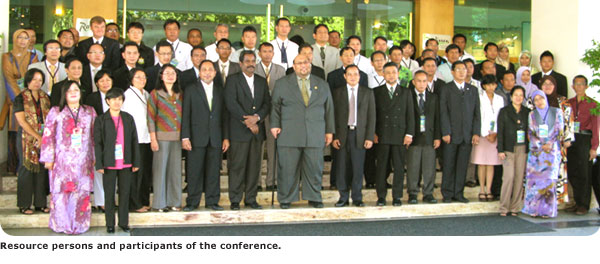
Natural heritage experts discussed ways to
promote cooperation in protected area management
and strategies for the effective and sustainable
management of the 28 ASEAN Heritage Parks (AHP).
Gathering in Bandar Seri Begawan for the 3rd AHP
Conference from 23 to 25 June 2010, AHP
managers, members of the AHP Committee, and
relevant national experts drafted a regional
action plan for the management of AHPs,
identifying and prioritizing capacity
development and public awareness activities to
enhance on-the-ground management of the parks.
The conference was organized by the ASEAN Centre
for Biodiversity (ACB) in cooperation with the
Department of Environment, Parks and Recreation
of the Ministry of Development of Brunei
Darussalam.
Addressing the conference, Dr. Van Monyneath,
Chairman of the ACB Governing Board and the
ASEAN Senior Officials on the Environment,
emphasized that the ultimate goal of managing
AHPs is the prosperity and survival of humankind
as these parks do not represent nature alone.
“The variety of life in these parks is crucial
in providing the wealth, health and well-being
of people,” he said.
Haji Mohd Rozan Bin Dato Paduka Haji Mohd Yunos,
Permanent Secretary for Administration and
Finance of Brunei’s Ministry of Development,
stressed the important role of local communities
in the management of heritage reserves.
“Alongside with the natural wealth and beauty of
a place, the most important aspect about the
AHPs is its benefits to local people and the
local economy,” he emphasized.
Dr Raman Letchumanan, Head of the Environment
Division at the ASEAN Secretariat, stressed that
the roles of park managers are crucial to the
success of conservation of the heritage parks.
This year’s ASEAN Heritage Park Conference,
themed “Moving Forward towards Effectively
Managed ASEAN Heritage Parks”, provided
participants with a venue to share experiences
and the indigenous solutions they had developed
to effectively manage their own parks. The
ASEAN Heritage Parks Programme was created to
generate greater awareness, appreciation,
enjoyment, and conservation of the region’s rich
natural and cultural heritages. ACB serves as
the secretariat of the programme. For more
information on the ASEAN Heritage Parks, visit
www.aseanbiodiversity.org.
^ Back to top
PES approach to support green
growth in Asia
The ASEAN, China and the United States are
working together to develop environmental
service markets and promote the Payment for
Ecosystem Services (PES) approach as a tool for
sustainable economic development, poverty
reduction, and biodiversity conservation.
Southeast Asian and Chinese government officials
and representatives of international
organizations and the private sector convened in
Da Lat, Lam Dong, Viet Nam on from 21 to 22 June
to discuss the steps needed to create or
strengthen PES legal and policy enabling
conditions and to learn from each other’s
experiences.
The PES approach develops economic incentives
that enable potential buyers or beneficiaries of
environmental services to secure them from
providers such as farmers, rural communities,
etc. Such services include biodiversity
conservation, water regulation and watershed
protection, landscape beautification in support
of ecotourism, forest and soil conservation, and
carbon offsets. The development of markets
through which these processes or services may be
bought and sold represents a market-based policy
approach to conservation. Funds generated from
PES, when invested strategically, can help
support the protection of forests and wildlife
habitats, ensure clean drinking water, reduce
operating costs for hydropower facilities,
provide cheaper electricity costs to consumers,
and generate higher incomes for poor rural
families living in forested areas. PES has the
potential to be a powerful tool for sustainable
economic development, poverty reduction, and
biodiversity conservation.
The workshop was organized by the USAID-Asian
Regional Biodiversity Conservation Programme ,
Asian Development Bank, the United Nations
Economic and Social Commission for Asia and the
Pacific, and the ASEAN Centre for Biodiversity.
^ Back to top
2,517 species
in the ASEAN region in danger of vanishing
A total of 2,517
threatened species of plants and animals in
Southeast Asia is in danger of disappearing
from the Earth’s surface. This was based on an
assessment of 8,613 species conducted by the
Switzerland-based International Union for
Conservation of Nature (IUCN). Scientists
estimate that there could be close to 100
million species of plants and animals
worldwide, but only about two million of these
species have been identified. Of the number,
an estimated 17,291 of these plants and
animals are already in danger of extinction,
with the ASEAN region alone accounting for 30
percent of these threatened species.
^ Back to top
On 22 September, ring a bell for biodiversity
On 22 September, Heads of State will assemble
at the United Nations Headquarters to discuss
the biodiversity crisis. Simultaneously, the
Secretariat of the Convention on Biological
Diversity (CBD) encourages the ringing of
bells all over the world as an urgent ‘memo’
to rouse the world to action. The bells will
also be rung each year on 22 May during the
celebration of the International Day for
Biological Diversity.
This initiative is inspired by the UK-based
MEMO Project. MEMO, which stands for Mass
Extinction Memorial Observatory, is a
collaboration of scientists and sculptors and
stonemasons dedicated to communicating the
reality of the extinction crisis by creating
an ongoing memorial, recording the carved
images of all the species being lost. MEMO
will be built on the cliffs of the Isle of
Portland overlooking the sailing events of the
London Olympics. In the middle of the
monument will be a huge bell to be tolled
whenever a species is assessed as extinct from
now on. For more information on MEMO, contact
Sebastian Brooke MEMO, Project Director at
seb@memoproject.org or visit
http://www.memoproject.org.
^ Back to top
Grim scenario on ocean biodiversity
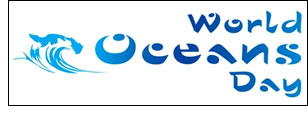 Dr.
Ahmed Djoghlaf, Executive Secretary of the
Convention on Biological Diversity (CBD),
appealed to all citizens of the world to help
protect the biodiversity of oceans.
His message during the observance of World
Oceans Day emphasized the importance of oceans
in our daily lives. “Oceans are at the centre
of our life, providing the crucial goods and
services required by human beings and other
creatures. Yet, they are under siege more than
ever before. Today, we need to stop our
unsustainable practices, focus on these vast
reservoirs of our world and look at them as an
important part of the web of life.” Dr.
Ahmed Djoghlaf, Executive Secretary of the
Convention on Biological Diversity (CBD),
appealed to all citizens of the world to help
protect the biodiversity of oceans.
His message during the observance of World
Oceans Day emphasized the importance of oceans
in our daily lives. “Oceans are at the centre
of our life, providing the crucial goods and
services required by human beings and other
creatures. Yet, they are under siege more than
ever before. Today, we need to stop our
unsustainable practices, focus on these vast
reservoirs of our world and look at them as an
important part of the web of life.”
The CBD Executive Secretary said that this
year’s celebration of World Oceans Day took on
added significance because 2010 is the
International Year of Biodiversity. Citing the
Global Biodiversity Outlook that describes the
current state of world biodiversity, including
marine and coastal biodiversity, he said that
coastal habitats such as mangroves, seagrass
beds, salt marshes and shellfish reefs
continue to decline in extent, threatening
highly valuable ecosystem services. Such
decline also diminishes their ability to
remove significant quantities of carbon
dioxide from the atmosphere.About one fifth of
the world's mangroves, covering 36,000 square
kilometers, were lost between1980 and 2005.
The quantity of carbon buried each year by
vegetated coastal habitats has been estimated
at between 120 and 329 million tons.
^ Back to top
ASEAN-WEN Species ID Guides, a model for EU
and Oceania authorities
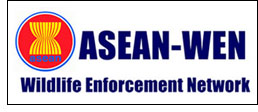 ASEAN-WEN
species identification guides are helping law
enforcement authorities in Southeast Asia and
elsewhere. In early February 2010, the New
Zealand Wildlife Enforcement Group made an
official request to use the ASEAN-WEN species
identification guides as a template to produce
their own guides for the Oceania region. Later
that month, European authorities informed the
ASEAN-WEN of extremely positive feedback
received following the distribution of ASEAN-WEN
identification guides as a reference material
to help officers identify heavily traded
species originating from Southeast Asia. “This
is a great example of inter-regional resource
sharing to support the global fight against
illegal wildlife crime”, said Dr. Chumphon
Sukkaseam, Senior Officer of the ASEAN-WEN
Program Coordination Unit.
ASEAN-WEN Species ID
Guides are available online (English
version). ASEAN-WEN
species identification guides are helping law
enforcement authorities in Southeast Asia and
elsewhere. In early February 2010, the New
Zealand Wildlife Enforcement Group made an
official request to use the ASEAN-WEN species
identification guides as a template to produce
their own guides for the Oceania region. Later
that month, European authorities informed the
ASEAN-WEN of extremely positive feedback
received following the distribution of ASEAN-WEN
identification guides as a reference material
to help officers identify heavily traded
species originating from Southeast Asia. “This
is a great example of inter-regional resource
sharing to support the global fight against
illegal wildlife crime”, said Dr. Chumphon
Sukkaseam, Senior Officer of the ASEAN-WEN
Program Coordination Unit.
ASEAN-WEN Species ID
Guides are available online (English
version).
http://www.aseanwen.org/index.php?option=com_docman&task=doc_details&gid=12&Itemid=80
^ Back to top
First-ever Water Hour held 8 pm, 11
June
 A
total of 66 different environmental
organizations worldwide promoted Water Hour
on 11 June 2010 through Twitter. Water Hour
is an initiative of the Ecologos
Institute’s wider water protection programme
called Water Alive. Water Hour is one facet of
the
Water Alive! programme, which also
includes
water-alive.org – a cutting-edge hub for
water action projects worldwide, a place to
connect with others and support projects that
protect drinking water. Harnessing the massive
power of social networks, the most amazing
projects are voted to the home page for
funding and exposure. Water-alive.org is
currently in development, in partnership with
the Centre for Sustainable Watersheds. A
total of 66 different environmental
organizations worldwide promoted Water Hour
on 11 June 2010 through Twitter. Water Hour
is an initiative of the Ecologos
Institute’s wider water protection programme
called Water Alive. Water Hour is one facet of
the
Water Alive! programme, which also
includes
water-alive.org – a cutting-edge hub for
water action projects worldwide, a place to
connect with others and support projects that
protect drinking water. Harnessing the massive
power of social networks, the most amazing
projects are voted to the home page for
funding and exposure. Water-alive.org is
currently in development, in partnership with
the Centre for Sustainable Watersheds.
^ Back to top
Visioning workshop held for
South China Sea Seascape
The South China Sea has been selected as the
new priority seascape of the Philippines, next
to the Sulu Sulawesi Seascape, in compliance
with Goal 1 of the Coral Triangle Initiative
Regional and National Plans of Action.
According to the Coral Triangle Support
Partnership (CTSP), the South China Sea bested
the northern pacific seaboard and the south
pacific seaboard as the next priority
seascape, based on biophysical, socio‐economic, and governance criteria. Its
biophysical attributes, which include the vast
area of coral reefs in the Kalayaan Group of
Islands, is a solid justification to put the
seascape into some form of management regime.
Likewise, its multiple uses for fishing, sea
lanes, and oil exploration highlight the
overlay of socio‐economic
dimensions.
As a first step
toward the protection and conservation of the
South China Sea Seascape, the CTSP organized a
workshop from 10 to 11 June 2010 in Antipolo
City, Philippines to formulate a vision and
mission for the seascape. The workshop
presented the current state of the South China
Sea in terms of coastal habitats, fisheries,
tourism, navigation, and governance; and
planned for the development a South China Sea
Seascape Management and Investment Plan until
2013.
^ Back to top
CBD-sponsored global symposium
focuses on
capacity building in taxonomy
Parties to the Convention of Biological Diversity (CBD),
governments, international organizations,
donors, indigenous communities, and the
scientific community participated in the
Convention on Biological Diversity (CBD)
Secretariat-sponsored Global Taxonomy
Initiative (GTI) Symposium: “Taking Stock of
the Renaissance in Taxonomy: Post 2010
Capacity Building for the Convention on
Biological Diversity”, from 15 to 16 May 2010
at the Conference Hall of the World
Agroforestry Centre in Nairobi, Kenya.
The symposium was aimed at maximizing capacity building in taxonomy
with innovative technologies, including DNA
barcoding, biodiversity informatics and
increased regional cooperation to facilitate
the implementation of the CBD. The
participants of the 14th Meeting of the
Subsidiary Body on Scientific, Technical and
Technological Advice were also present to
collect information on taxonomy and advanced
technologies in taxonomy, and to discuss
capacity development projects at national,
regional and global levels.
The GTI ensures that taxonomic information and expertise required
to implement the CBD is available where and
when required and, as a part of this process,
supports building requisite capacity at local,
national, regional and global levels.
^ Back to top
Philippine joins
Singapore, Malaysia with Clearing House
Mechanism website
The Philippines joins the ranks of Malaysia
and Singapore as the ASEAN Member States (AMS)
with the
most functional and active national
Clearing House
Mechanisms (CHM).
The Protected Areas
and Wildlife Bureau of the Department of
Environment and Natural Resources recently
launched the Philippine CHM with the hope of
providing people more access to the country’s
wealth of information about its rich
biodiversity.
The ASEAN Centre for Biodiversity (ACB)
promotes the use of CHM as a tool to share
biodiversity information, and to effectively
implement the national biodiversity strategies
and action plans of each AMS. Since
expertise in
managing information and technology varies
enormously from country to country, the
Convention on Biological Diversity established
a “Clearing-House Mechanism” to ensure that
all governments have access to the information
and technologies they need for their work on
biodiversity. The basic components of a
national CHM include a National Focal Point, a
stakeholder’s network, and a website. The CHM
is also a useful tool for countries to meet
environmental reporting requirements of
multilateral environmental agreements.
^ Back to top
Hope for endangered crocs in Cambodia
A nest of 22 eggs of the endangered Siamese
crocodile was discovered in the isolated Areng
Valley of the Cardamon Mountains of Cambodia.
Fauna and Flora International researchers
reported that 13 of the 15 eggs that they have
incubated in a compost heap to replicate the
original nest have already hatched. Seven of
the eggs, which appeared to be unfertilized,
were left in the original nest, but within 10
hours, three also started to hatch. According
to reports, there are as few as 250 Siamese
crocodiles left in the wild, and mostly in
Cambodia but with a few spread between Laos,
Myanmar, Indonesia, Vietnam and possibly
Thailand. Conservation of this once-abundant
species is a key programme of the United
Kingdom-based Fauna and Fauna International.
^ Back to top
 Philippines
to host first Asian Bird Fair Philippines
to host first Asian Bird Fair
The first ever Asian Bird Fair will be held on 24 and 25 September
this year in the city of Davao, southern
Philippines.
Six national bird watching groups from Thailand, Singapore,
Malaysia, Taiwan, China and the Philippines
are collaborating in the event, which is
centered on the Philippine Eagle, the
country’s national bird. Major activities
include a bird watching trip to Philippine
Eagle habitats as well as habitats of
migratory birds, and scientific lectures by
international authorities. This year's hosts
are the Wild Bird Society of the Philippines
and the Philippine Eagle Foundation.
The Asian Bird Fair will be held annually in
different cities in Asia and hosted by a bird
club or society. The Fair aims to encourage
collaboration and the exchange of experience
and best practices among bird clubs of Asia;
foster bird-watching as an ecotourism
activity; highlight bird festivals, bird fairs
and bird races in the region; and promote the
natural beauty, eco-adventure activities, wild
bird conservation, and cultural heritage of
the host city or country.
More information can
be obtained from
http://www.birdwatch.ph/index.html.
^ Back to top
FREELAND trains Vietnamese rangers for better
forest and wildlife protection
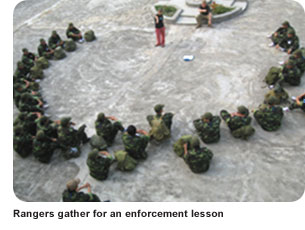 Thirty
rangers stationed in various areas of Chu Yang
Sin National Park in Viet Nam participated in
the recent “Enforcement Ranger Basic Training
Course”, which was designed and conducted by
FREELAND Foundation. The course aimed at
improving forest rangers’ capacity to conduct
counter-poaching patrols as an important step
in efforts to conserve the protected area’s
rich biodiversity. The Chu Yang Sin National
Park, BirdLife Vietnam and FREELAND jointly
organized the two-week course. Thirty
rangers stationed in various areas of Chu Yang
Sin National Park in Viet Nam participated in
the recent “Enforcement Ranger Basic Training
Course”, which was designed and conducted by
FREELAND Foundation. The course aimed at
improving forest rangers’ capacity to conduct
counter-poaching patrols as an important step
in efforts to conserve the protected area’s
rich biodiversity. The Chu Yang Sin National
Park, BirdLife Vietnam and FREELAND jointly
organized the two-week course.
The training course covered practical skills
to conduct difficult patrolling and
enforcement tasks safely and effectively.
Specific activities included filed training in
structured teams, patrolling and patrol
formations, adapting to changing situations,
silent hand signal communications, information
gathering, various arrest methods, and
evidence gathering o support legal process. –
ASEAN WEN
^ Back to top
Deforestation driven by rural exodus and
agricultural trade
Deforestation in the tropics is being driven
by people moving from villages to cities and
the global demand for agricultural products,
according to a recent study. In their article
“Deforestation driven by urban population
growth and agricultural trade in the
twenty-first century”, DeFries, R.S
et.al (2010) suggest that forest
conservation policies that target small
landowners should also target
industrial-scale, mechanized farming if such
initiatives are to be effective.
Under the United Nations Framework Convention
on Climate Change, reduced emissions from
avoided deforestation and degradation (REDD)
is considered to be a cost-effective option
for storing carbon in forests and a means of
mitigating climate change. It is argued that
these initiatives will only be effective in
reducing deforestation if the drivers of
forest loss are understood.
Of these factors, urbanization in tropical
countries and, particularly in Asia,
agricultural exports to other countries
appeared to be linked with forest loss. The
researchers suggest the higher rate of forest
loss between 2000 and 2005, (compared with a
1980 base), was driven by demand for
agricultural products in urban markets, both
domestically and internationally, rather than
by the behavior of rural populations.
The researchers suggest policies should be
flexible enough to adjust to the shifting
causes of deforestation. Governments should
focus on incentives to maximize yields on
already-cleared land instead of clearing more
land in order to meet both agricultural demand
and preserve forests. Source: DeFries,
R.S., Rudel, T., Uriarte, M. and Hansen, M.
(2010). Deforestation driven by urban
population growth and agricultural trade in
the twenty-first century. Nature Geoscience.
3: 178-181.
^ Back to top
Philippine media discovers Mt. Kitanglad’s
rich biodiversity
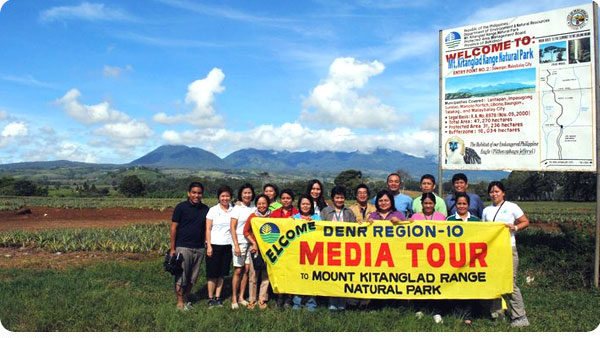
Bukidnon elders say that the Mt. Kitanglad
Range Natural Park in Bukidnon got its name
from the
“tanglad”
plant or lemon grass.
According to a legend, there
was once a great flood that submerged the
native lands of
Bukidnon and only the tip of the
mountain, the size of a “tanglad”
(lemon grass), remained visible (“kita”
in Cebuano).
Today, Mt. Kitanglad is highly visible in the
ASEAN region after it was declared
the 28th ASEAN Heritage
Park at the
11th ASEAN Ministerial Meeting on
the Environment in October 2009.
The Park’s diverse
and rich flora and fauna make it one of the
last sanctuaries of the country’s natural
heritage.
The Mt. Kitanglad Range Natural Park covers
47,270 hectares in the north central portion
of the province of Bukidnon, and straddles
parts of the municipalities of Baungon,
Talakag, Lantapan, Impasugong, Sumilao, Libona
and Manolo Fortich and the city of Malaybalay.
It is the major watershed that provides water
for irrigation, power generation and domestic
use for Bukidnon as well as the province of
Misamis Oriental, and the catchment area of
the Cagayan, Tagoloan and Pulangi river
system. It is likewise the ancestral domain of
the Talaandig, Higaonon and Bukidnon
ethnolinguistic groups that share common
historical and cultural ties with Mt.
Kitanglad.
Members of the Philippine media encountered
Mt. Kitanglad’s unique ecological diversity
when they visited the ASEAN Heritage Park on
17 to 19 June 2010. Organized by the
Philippines’ Department of Environment and
Natural Resources’ Protected Areas and
Wildlife Bureau and the ASEAN Centre for
Biodiversity (ACB), the media tour enabled
journalists from BusinessMirror, ABS-CBN, and
the Philippine News Agency to learn more about
Mt. Kitanglad and the ASEAN Heritage Parks
Programme.
“By exposing print and broadcast journalists
to the ASEAN Heritage Parks and their rich
biodiversity, we will have more allies in
explaining key biodiversity issues to the
general public,” Mr. Rodrigo U. Fuentes,
executive director of the European
Union-assisted ACB, said.
The journalists trekked Mt. Kitanglad to see
the nesting place of the Philippine Eagle.
The mountain is one of the few remaining
rainforests in the Philippines, hosting one of
the most important diverse species of rare and
endemic wildlife, most especially the
Philippine Eagle, the country’s national bird.
The group also visited the 22-hectare Mt.
Kitanglad Agri-Ecological Techno-Demo Center
in Imbayao, the Cinchona buffer zone
plantation, and Asia’s longest zipline in
Dahilayan Zip Zone. The media tour forms part
of the celebration of the International Year
of Biodiversity – a global celebration of the
web of life and its component species.
^ Back to top

CONSERVATION NEWS
SOUTHEAST ASIA
CLIMATE CHANGE
US to spend $136M on climate
change programs in Indonesia
The United States will spend $136 million over
three years on environment and climate change
programs in Indonesia. Indonesia is regarded as
a key player in the fight to slow climate change
because its tropical forests and carbon-rich
peatlands trap huge amounts of carbon dioxide
but its rapid deforestation rate has sparked
concern among environmentalists. The US would
allocate $119 million toward a partnership
called SOLUSI, which stands for Science, Oceans,
Land Use, Society and Innovation. SOLUSI also
covers clean-energy development programs and
marine research. $7 million would go toward the
creation of a regional climate change center
linking science to policy on strategic
priorities in the climate change area, and
focusing initially on emissions from peatlands.
A further $10 million would be set aside for
associated projects and partnerships, including
public-private partnerships focused on
addressing climate-related challenges in
Indonesia. –
Planet Ark
http://www.planetark.com/enviro-news/item/58578
Viet Nam pays to protect
ecosystems from climate change
Viet Nam is setting a good example with its
pilot Payments for Ecosystem Services (PES)
program in Lam Dong Province in the Central
Highlands (Tay Nguyen) of Viet Nam. Local
hydropower plants, water-supply companies and
tourism operators have so far paid US$3.5
million for the new system, with $2.2 million of
this going to 8,000 poor households who have
been engaged to protect 200,000ha of provincial
forests. PES helped put the forestry sector in
Viet Nam on the right track, complying with the
market economy, creating the right values, and
contributing to sustainable development.
Efforts to protect forests have also contributed
to the global response to negative climate
change and biodiversity conservation. –
Vietnam News
http://vietnamnews.vnagency.com.vn/Miscellany/200864/VN-pays-to-protect-eco-systems-from-climate-change.html
Indonesia to receive first $200
million grant from Norway
Indonesia will receive the first US$200 million
in grants from Norway between 2010 and 2011, as
part of the $1 billion grant to reduce emissions
from deforestation. In the agreement, Norway
has pledged to disburse the money in three
phases. The first phase, from now until 2011,
will involve consolidation, capacity building,
and the establishment of an internationally
reputable financial institution by October
2010. The second phase in 2011 involves the
selection of one forest, which would comply with
the MRV scheme. MRV stands for measurable,
reportable and verifiable, in which every ton of
emission cut should be assessed by independent
auditors. In the third phase in 2013, all
forests nationwide will be protected as part of
the government’s effort to reduce Indonesia’s
carbon emissions by 26 percent by 2020 with its
own resources, or by 41 percent with
international help. –
The Jakarta Post
http://www.thejakartapost.com/news/2010/06/11/ri-receive-first-200-million-grant-norway.html
ENDANGERED
SPECIES
Planting figs could save
endangered species in Borneo
In one of the most remote and undisturbed
forests of Borneo, the Maliau Basin in the
Malaysian state of Sabah, researchers picked a
single fig tree (Ficus caulocarpa) and
surveyed the species feeding from it over a
5-day-period. Their findings, published in
Tropical Conservation Science, shows that a fig
tree feeds a high percentage of endangered
species, prompting researchers to recommend
replanting figs in disturbed forests as a way to
save Borneo's frugivores (fruit-eating species)
from extinction. Figs produce fruits all year
round and provide a constant source of fruit to
frugivores. Studies in Borneo have found that
42 percent of known birds and 73 percent of
known mammals feed on figs. But the fig-eating
animals repay the trees by spreading their
seeds—and genetics—across the forest. Over five
days of studying the Ficus caulocarpa
tree, researchers counted 493 visits by 44 bird
species and three mammals, all squirrels. Of
the bird species, 15 (34 percent of total birds
viewed) are listed as Near Threatened or worse
by the IUCN Red List. The findings showed that
this particular fig, which produces smaller
fruits, fed a more selective host than many
other fig trees in the region. –
mongabay.com
http://news.mongabay.com/2010/0628-hance_fig_fauna.html
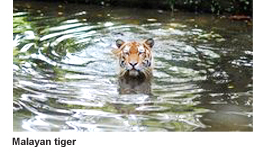 Malaysia
to probe killing of tiger Malaysia
to probe killing of tiger
Malaysian wildlife authorities are investigating
the killing of a three-year-old tiger. The
tiger was killed in northern Perak state after a
villager claimed it attacked his poultry and
asked a member of the government's volunteer
force to shoot the animal. The killing comes as
Malaysia tries to double its tiger population to
1,000 by 2020. There are only 500 wild tigers
left in peninsular Malaysia, a sharp decline
from an estimated 3,000 in the 1950s. –
Agence France Presse
http://news.yahoo.com/s/afp/20100623/sc_afp/malaysiatigerwildlife
Endangered crocodiles hatched in
Cambodia
Conservationists in Cambodia are celebrating the
hatching of 13 baby Siamese crocodiles, which
crawled out of their shells in a remote part of
the Cardamom Mountains in southwestern
Cambodia. Experts believe as few as 250 Siamese
crocodiles are left in the wild, almost all of
them in Cambodia but with a few spread between
Lao PDR, Myanmar, Indonesia, Viet Nam and
possibly Thailand. The nest, with 22 eggs
inside, was discovered in the isolated Areng
Valley by researchers from Fauna and Flora
International (FFI). Volunteers removed 15 eggs
and incubated them in a compost heap to
replicate the original nest. The reptiles are
now being kept in a water-filled pen in a local
village in the jungle-covered mountain range.
The indigenous Chouerng people who live there
revere crocodiles as forest spirits and consider
it taboo to harm them. The Siamese crocodile
has suffered a massive decline over the last
century, because of a high demand for its soft
skin. Commercial breeders also brought them to
stock farms where they crossed them with larger
types of crocodile, producing hybrids which
further reduced numbers of the pure Siamese. In
1992 it was declared "effectively extinct in the
wild" before being rediscovered in the remote
Cardamoms in Cambodia eight years later.
Siamese crocodiles take 15 years to reach sexual
maturity, complicating efforts to revive the
population. Only a handful of the 13 new crocs
are likely to survive long enough to make a
long-term impact on numbers. –
Associated Press
http://www.google.com/hostednews/ap/article/ALeqM5ixbmqX5HA-b0np9ZB1qFc8PfmmaQD9G88EV00
Malaysia officials to trap rhino
for breeding
Malaysian wildlife officials said they plan to
trap a rare female Borneo rhino caught on camera
to mate with a lone male rescued in 2008.
Officials said captive breeding was the only way
to prevent extinction of the wild rhino, under
threat from poaching. The wild female rhino was
spotted by remotely-set camera traps in eastern
Sabah. It followed the release on April 21 of
an image of a possibly pregnant female in
another part of the state. Just 30 rhinos are
known to remain in the wild on Borneo island,
which is shared by Malaysia, Indonesia and
Brunei, and researchers are only able to monitor
the population through images captured by remote
camera traps. The Borneo sub-species is the
rarest of all rhinos, distinguished from other
Sumatran rhinos by its relatively small size,
small teeth and distinctively shaped head. The
Sumatran rhino is one of the world's most
endangered species, with few left on Indonesia's
Sumatra island, the north of Borneo island and
peninsular Malaysia. –
Agence France Presse
http://www.google.com/hostednews/afp/article/ALeqM5h048UBk_SwYRiB3gNjbzYebzDczA
Abandoned Borneo baby pygmy
elephant rescued in Malaysia
Malaysian wildlife authorities have saved a
second endangered pygmy elephant calf on Borneo
island. The discovery of the two-year-old
female elephant followed the rescue of a
starving six-month-old elephant in another
area. Pygmy elephants are unique to Borneo and
form a sub-species of the Asian elephant. The
creatures have a rounded appearance and males
stand only about 2.5 metres (8.2 feet) tall,
compared to around 3.0 metres for mainland Asian
elephants. The elephant species is considered
endangered, with around 1,500-2,000 left on
Borneo island. Wildlife activists have warned
that Borneo pygmy elephants are fast losing
their natural habitat to deforestation and human
encroachment. –
Associated Press
http://www.google.com/hostednews/afp/article/ALeqM5iEUXfakjdd9oofCjRhbwJZc7S9yg
Intergovernmental
Science Policy Platform
on Biodiversity and Ecosystem Services
Governments rubber-stamp plan for
biodiversity panel
Governments at a United Nations meeting in Busan,
South Korea approved plans for a new
international scientific panel dedicated to
addressing biodiversity loss and modelled on the
Intergovernmental Panel on Climate Change. The
Intergovernmental Science Policy Platform on
Biodiversity and Ecosystem Services (IPBES) is
expected to provide international policy makers
with detailed research on the social and
economic impact of biodiversity loss and
environmental degradation. The new panel will
produce a series of reports that would not only
cover biodiversity and ecosystem trends, but
also outline transformational policy options and
responses to bring about real change. –
BusinessGreen.com
http://www.businessgreen.com/business-green/news/2264657/governments-rubber-stamp-plan
VALUING ECOSYSTEM
SERVICES
Rescuing ecosystems can save
trillions of dollars: U.N.
'Dying Planet, Living Planet', a study released
by the United Nations Environment Programme (UNEP)
said nations could boost their economies by
replenishing forests, marshes, coral reefs and
riverbanks. A few million dollars invested by
governments in restoring nature coukd prevent
far greater losses of the free services that
ecosystems provide to people around the world.
UNEP estimates that ecosystem services provide
up to $70 trillion per year of economic benefit.
The loss of these services coulkd also lead to a
25 percent loss in the world's food production
by 2050. – Planet Ark
http://www.planetark.com/enviro-news/item/58327
^ Back to top

FEATURE
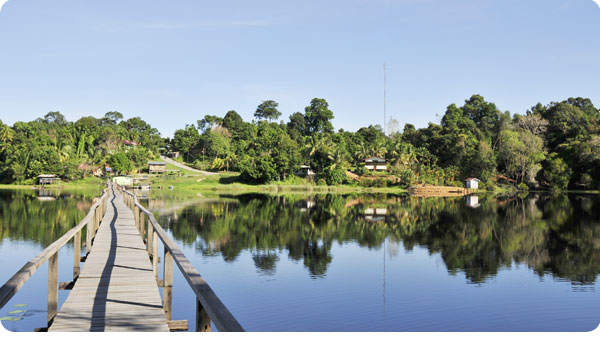
Tasek Merimbun Heritage Park: the
Gateway to Brunei’s Past and Culture
Tasek Merimbun is both a natural and cultural
heritage of Brunei Darussalam, often referred to
as the gateway to Brunei’s past and culture. The
park is a wildlife sanctuary, conservation spot
for flora and fauna, recreational centre, and a
venue for research and education. The wildlife
sanctuary is the first site to be declared a
national park, and the biggest wildlife
sanctuary among three others in Brunei: Pulau
Berambang (721 hectares), Pulau Siarau (393
hectares), and Pulau Pilong Pilongan (two
hectares).
The 7,800-hectare Heritage Park is located about
32 kilometers south of the Tutong-Kuala Belait
coastal highway on the west bank of Sungai
Tutong in Mukim Rambai, Tutong District. The
Park encloses catchments of small rivers feeding
into the Tasek Merimbun Lakes, Brunei’s largest
lake that is shaped almost like the letter S.
A general census of wildlife conducted since
1983 has led to the astonishing discovery and
first rare record of the white-collared fruit
bat, which is found only in Tasek Merimbun. The
discovery of other rare species and the richness
of mammals and bird species in the Park have led
to the declaration of Tasek Merimbun as an ASEAN
Heritage Park (Nyawa, 2007).
Fauna
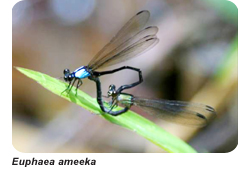 More than 90 percent of the park has yet to be
studied. Current records indicate 50 species of
freshwater fish, 68 species of mammals, 148
species of birds, 54 species of herpetofauna,
181 species of Lepidoptera, 54 species of
dragon and damselflies, and numerous other
insect species. One endemic species of
damselfly, the Euphaea ameeka, was
recently discovered in Tasek Merimbun. Both the
biggest (Tetracanthagyna plagiata) and
the smallest (Nannophya pygmaea) species
of dragonflies from Borneo Island have also been
recorded in the Park (Nyawa, 2007). More than 90 percent of the park has yet to be
studied. Current records indicate 50 species of
freshwater fish, 68 species of mammals, 148
species of birds, 54 species of herpetofauna,
181 species of Lepidoptera, 54 species of
dragon and damselflies, and numerous other
insect species. One endemic species of
damselfly, the Euphaea ameeka, was
recently discovered in Tasek Merimbun. Both the
biggest (Tetracanthagyna plagiata) and
the smallest (Nannophya pygmaea) species
of dragonflies from Borneo Island have also been
recorded in the Park (Nyawa, 2007).
Tasek Merimbun is also one of seven Important
Bird Areas (IBAs) in Brunei listed by BirdLife
International. IBAs are critical sites for the
conservation of the world’s birds (Birdlife
International and IUCN-WCPA Southeast Asia,
2007).
The Heritage Park is also home to a number of
rare and endangered species, including all eight
species of hornbills in Borneo, clouded leopard,
slow loris, tarsier, sun bear, great argus
pheasant, Bornean gibbon, white-collared bat,
white-bellied sea eagle, Vordermann’s flying
squirrel, yellow-throated marten, Malay weasel,
otter civet, banded palm civet, banded linsang,
reticulated python, and estuarine crocodile.
Butterflies of the genera Trogonoptera
and Troides, which are listed in CITES,
are also found in the Park (Nyawa, 2007).
Flora
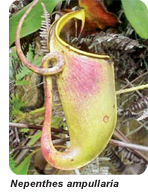 At least 800 species of plants have been
recorded on just four one-hectare study plots,
out of the 7,800-hectare Park. The number could
increase to thousands after more studies are
conducted on the whole area. There are at least
four species of pitcher plants (Nepenthes
ampullaria, N. mirabilis, N. bicalcarata and
N. gracilis), one species each of Agar
wood or Gaharu (Aqualaria beccariana),
and of Ramin (Gonystylus maingayi) in the
park. Agar wood is a native tree species
endangered by commercial poaching, which is used
to manufacture incense and perfume (Brunei
Times, 2008). Another native plant is called
purun (Lepironia articulate), which
abundantly grows wild in the lake. Its long
stalk is so pliable that it sways so
beautifully, creating natural patterns of
movement, especially during low tide. Purun is
one of the raw materials used by the native
Dusuns for their handicrafts. Because of its
uniqueness, purun was selected for the logo of
the Park. One of the Park buildings - Balai
Purun or Purun Hall - was even named after it. At least 800 species of plants have been
recorded on just four one-hectare study plots,
out of the 7,800-hectare Park. The number could
increase to thousands after more studies are
conducted on the whole area. There are at least
four species of pitcher plants (Nepenthes
ampullaria, N. mirabilis, N. bicalcarata and
N. gracilis), one species each of Agar
wood or Gaharu (Aqualaria beccariana),
and of Ramin (Gonystylus maingayi) in the
park. Agar wood is a native tree species
endangered by commercial poaching, which is used
to manufacture incense and perfume (Brunei
Times, 2008). Another native plant is called
purun (Lepironia articulate), which
abundantly grows wild in the lake. Its long
stalk is so pliable that it sways so
beautifully, creating natural patterns of
movement, especially during low tide. Purun is
one of the raw materials used by the native
Dusuns for their handicrafts. Because of its
uniqueness, purun was selected for the logo of
the Park. One of the Park buildings - Balai
Purun or Purun Hall - was even named after it.
References
ASEAN Heritage Parks and Reserves. 1992.
Published by ASOEN in collaboration with the
Japan International Cooperation Agency and the
United Nations Environment Programme
BirdLife International and IUCN-WCPA Southeast
Asia (2007). Gap analysis of protected areas
coverage in the ASEAN countries. Cambridge,
U.K.: BirdLife International.
Explore Brunei. A Visitor’s Guide, 6th Edition.
Museum Heritage Park. 2000, (Published by the
Museums Department, Ministry of Culture, Youth
and Sports, Brunei Darussalam)
New 7 Wonders Website:
http://www.new7wonders.com/nature/en/nominees/asia/c/TasekMerimbun/
Samhan b. Nyawa. 2007.Brunei Country Report.
In: Proceedings of the 2nd ASEAN
Heritage Parks Conference and the 4th
Regional Conference of Protected Areas in
Southeast Asia. Sabah, Malaysia.23-27 April
2007.
The Brunei Times. 2009. “Dusun
community marks Adau Gayoh festival”
In: The Brunei Times, 11 May 2009.
http://www.bt.com.bn/en/en/home_news/2009/05/11/dusun_community_marks_adau_gayoh_festival
The Government of Brunei Darussalam Website:
http://brunei.gov.bn/
The Brunei Tourism Website:
www.bt.com.bn
Yasuda, Masatoshi. 2003. Mammals of Tasek
Merimbun Heritage Park (http://cse.ffpri.affrc.go.jp/myasuda/merimbun/)
^ Back to top

About ACB
The ASEAN Centre
for Biodiversity
(ACB) is an intergovernmental regional centre of excellence
that facilitates
cooperation and
coordination
among the
members of
ASEAN, and with
relevant
governments and
organizations on
the conservation
and sustainable
use of
biological
diversity.
Protecting
Southeast Asia’s
rich but highly
threatened web
of life is its
main goal.
Vision
Biodiversity is protected, conserved, managed
and sustainably used, and its benefits are
fairly and equitably shared for the social,
economic and environmental well-being of ASEAN
Member States.
Mission
ACB champions biodiversity conservation in the
region and enhances its global standing as a
center of excellence for biodiversity
conservation.
Components
1.
Programme development and policy coordination
2.
Human and institutional capacity development
3.
Biodiversity information management
4.
Public and leadership awareness of biodiversity
values
5.
Sustainable financing mechanism.
^ Back to top

Contact Us
Public Affairs
Unit
ACB
Headquarterss
3/F ERDB
Building
Forestry Campus
College, Laguna
4031
Philippines
Tels:
+6349-5362865
+6349-5361739
Website:
www.aseanbiodiversity.org
General Inquiry:
contact.us@aseanbiodiversity.org
^ Back to top |